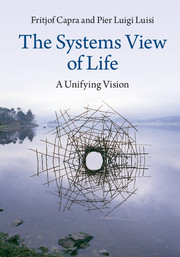Book contents
- Frontmatter
- Dedication
- Contents
- Preface
- Acknowledgments
- Introduction Paradigms in science and society
- I The mechanistic worldview
- II The rise of systems thinking
- III A new conception of life
- IV Sustaining the web of life
- 16 The ecological dimension of life
- 17 Connecting the dots
- 18 Systemic solutions
- Bibliography
- Index
16 - The ecological dimension of life
from IV - Sustaining the web of life
Published online by Cambridge University Press: 05 April 2014
- Frontmatter
- Dedication
- Contents
- Preface
- Acknowledgments
- Introduction Paradigms in science and society
- I The mechanistic worldview
- II The rise of systems thinking
- III A new conception of life
- IV Sustaining the web of life
- 16 The ecological dimension of life
- 17 Connecting the dots
- 18 Systemic solutions
- Bibliography
- Index
Summary
Having discussed the systems view of life in its biological dimension (Chapters 7–11), its cognitive dimension (Chapters 12–13), and its social dimension (Chapter 14), and having proposed a conceptual framework that integrates these three dimensions (Section 14.3), we shall now, in the last part of our book, include the ecological dimension in our synthesis of the systemic conception of life.
In fact, we could have (and, perhaps, should have) begun this discussion with the ecological dimension, since it is well known that no individual organism can exist in isolation. Animals depend on the photosynthesis of plants for their energy needs; plants depend on the CO2 produced by animals, as well as on the nitrogen fixed by microorganisms at their roots; and together plants, animals, and microorganisms regulate the entire biosphere and maintain the conditions conducive to life. As Harold Morowitz (1992, p. 54) reminds us,
Sustained life is a property of an ecological system rather than a single organism or species. Traditional biology has tended to concentrate attention on individual organisms rather than on the biological continuum. The origin of life is thus looked for as a unique event in which an organism arises from the surrounding milieu. A more ecologically balanced point of view would examine the proto-ecological cycles and subsequent chemical systems that must have developed and flourished while objects resembling organisms appeared.
Indeed, according to Gaia theory (discussed in Section 8.3.3), the evolution of the first living organisms went hand in hand with the transformation of the planetary surface from an inorganic environment to the self-regulating biosphere. “In that sense,” writes Morowitz (1992, p. 6), “life is a property of planets rather than of individual organisms.”
- Type
- Chapter
- Information
- The Systems View of LifeA Unifying Vision, pp. 341 - 361Publisher: Cambridge University PressPrint publication year: 2014



